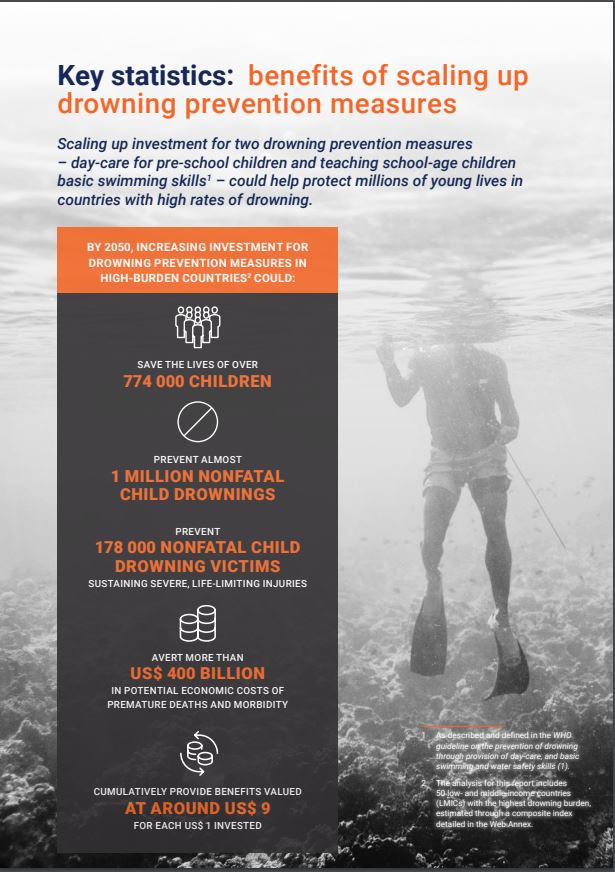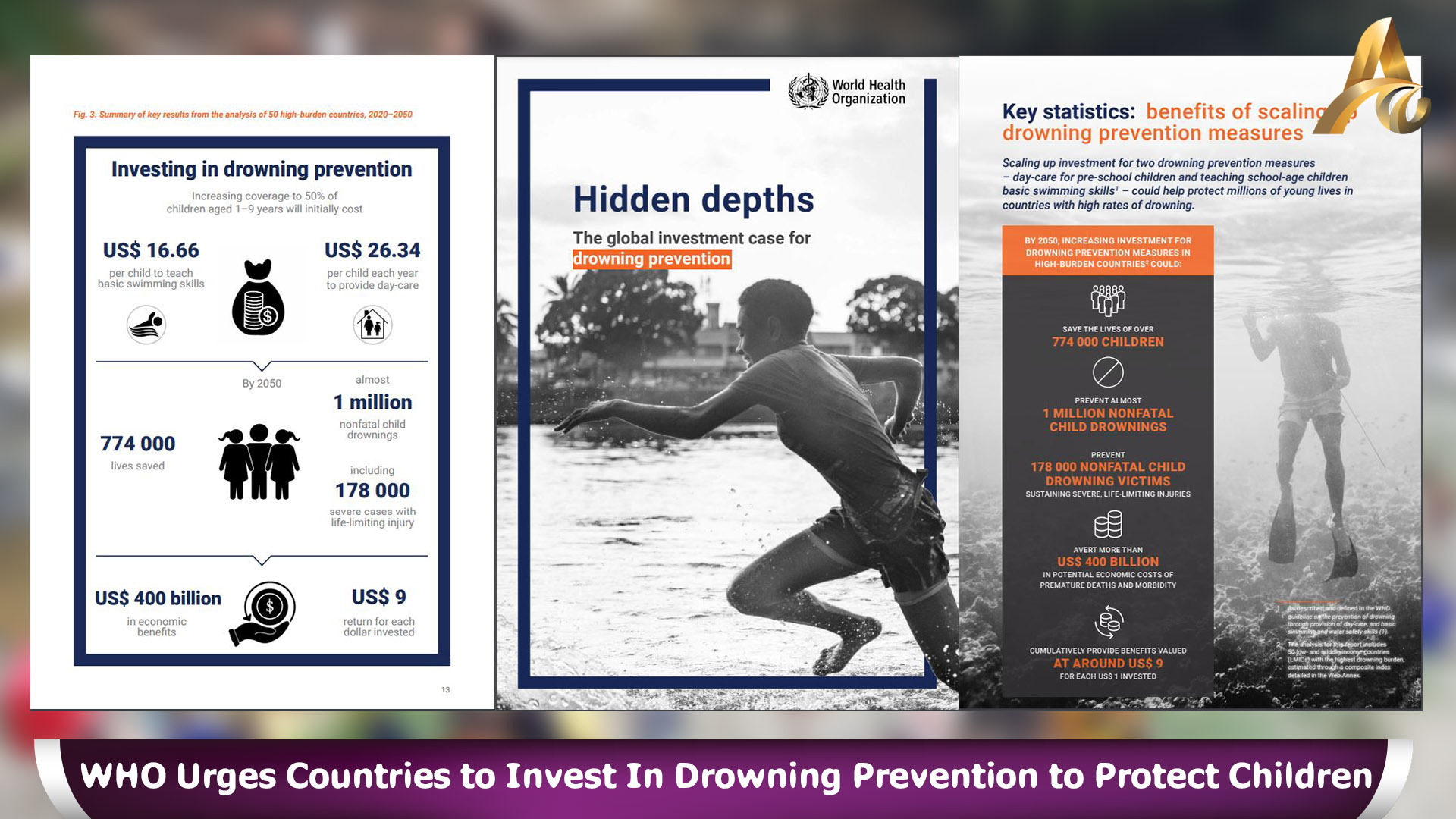INTERNATIONAL: WHO Releases Investment Case on Drowning Prevention, Urges Global Action to Save Lives On World Drowning Prevention Day, the World Health Organization (WHO) is highlighting the urgent need for investment in drowning prevention measures. A new investment case by WHO reveals that just two crucial actions could protect millions of lives: investing in day care for pre-school aged children and teaching basic swim skills to school-age children. The report emphasizes that each dollar invested in these actions can yield benefits up to nine times the original value.
Drowning remains a significant but often overlooked public health issue, responsible for over 2.5 million deaths in the last decade, with a staggering 90% of these fatalities occurring in low- and middle-income countries. The highest drowning rates are experienced by children aged 1–4 years and 5–9 years, underscoring the necessity for immediate action to safeguard future generations.
However, effective solutions are within reach. According to the new investment case, increased global investment in these two preventive measures by 2050 could save the lives of over 774,000 children, prevent nearly 1 million non-fatal child drownings, and spare 178,000 drowning victims from severe and life-limiting injuries.
Moreover, the adoption of these preventive measures could lead to significant economic gains, with potential losses of over US$400 billion in low- and middle-income countries being averted. The cumulative benefits would be valued at approximately US$9 for every US$1 invested. Several countries, including Bangladesh, South Africa, Thailand, and Viet Nam, have already implemented these cost-effective interventions, benefiting children and families and reducing the risk of drowning while promoting overall health, development, and wellbeing.
WHO Director-General Dr. Tedros Adhanom Ghebreyesus stressed the importance of implementing preventive measures, increasing investments, and raising awareness to save countless lives. He urged countries and partners to join hands in making drowning prevention a global priority.
In response to the World Health Assembly's resolution on drowning prevention adopted in May 2023, WHO is launching the Global Alliance for Drowning Prevention. This alliance aims to coordinate, strengthen, enhance, and expand efforts to prevent drowning deaths, in alignment with WHO's priorities. Operating on principles such as coordination, evidence-based approaches, and driving country-level action, the alliance seeks to bring together governments and partners from around the world to spread life-saving interventions and save many more lives.
Michael R. Bloomberg, founder of Bloomberg LP and Bloomberg Philanthropies and WHO Global Ambassador for No communicable Diseases and Injuries, highlighted that drowning has claimed over 2.5 million lives in the past decade. Through the implementation of proven life-saving solutions like teaching basic swimming skills and providing child care, he emphasized the opportunity to save many more lives by uniting governments and partners worldwide.
Furthermore, WHO is preparing a global status report on drowning prevention to assess the impact of drowning and analyze government actions worldwide. The report aims to provide essential information for policy-makers and program managers, catalyzing more action to implement low-cost, scalable, and effective drowning prevention interventions as recommended by WHO. All 194 Member States have been invited to participate in this critical effort to address the global drowning crisis.

























